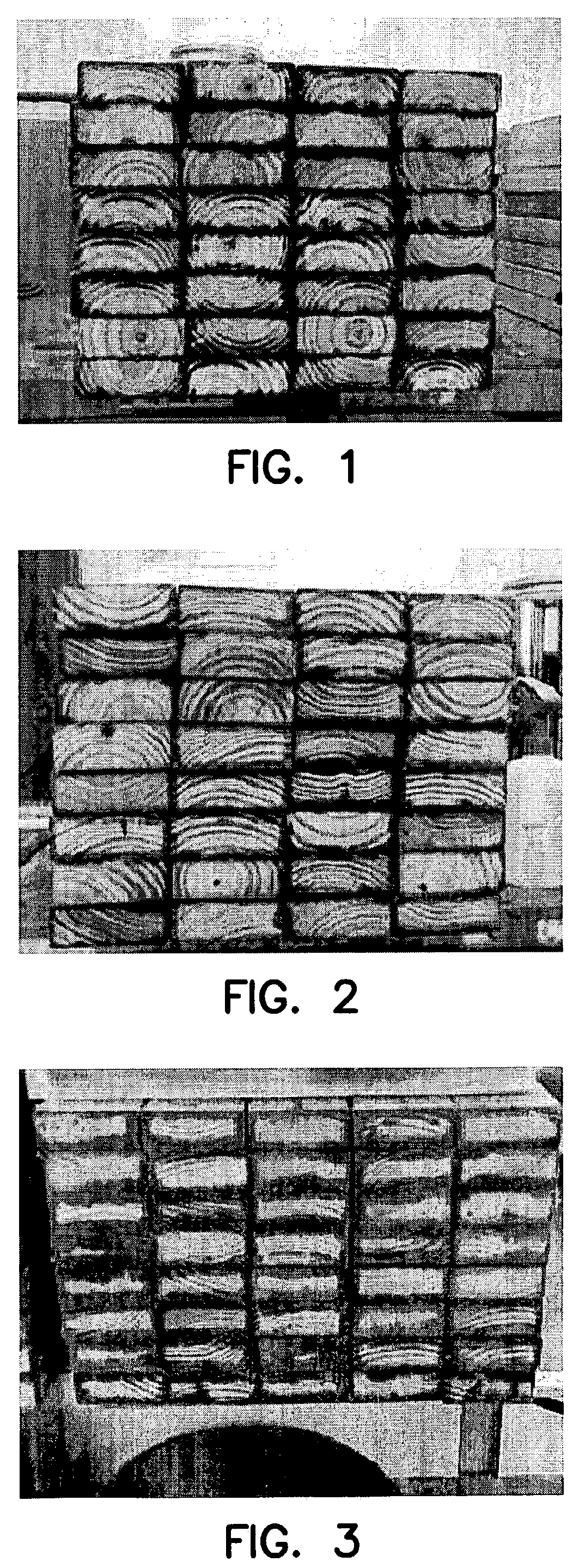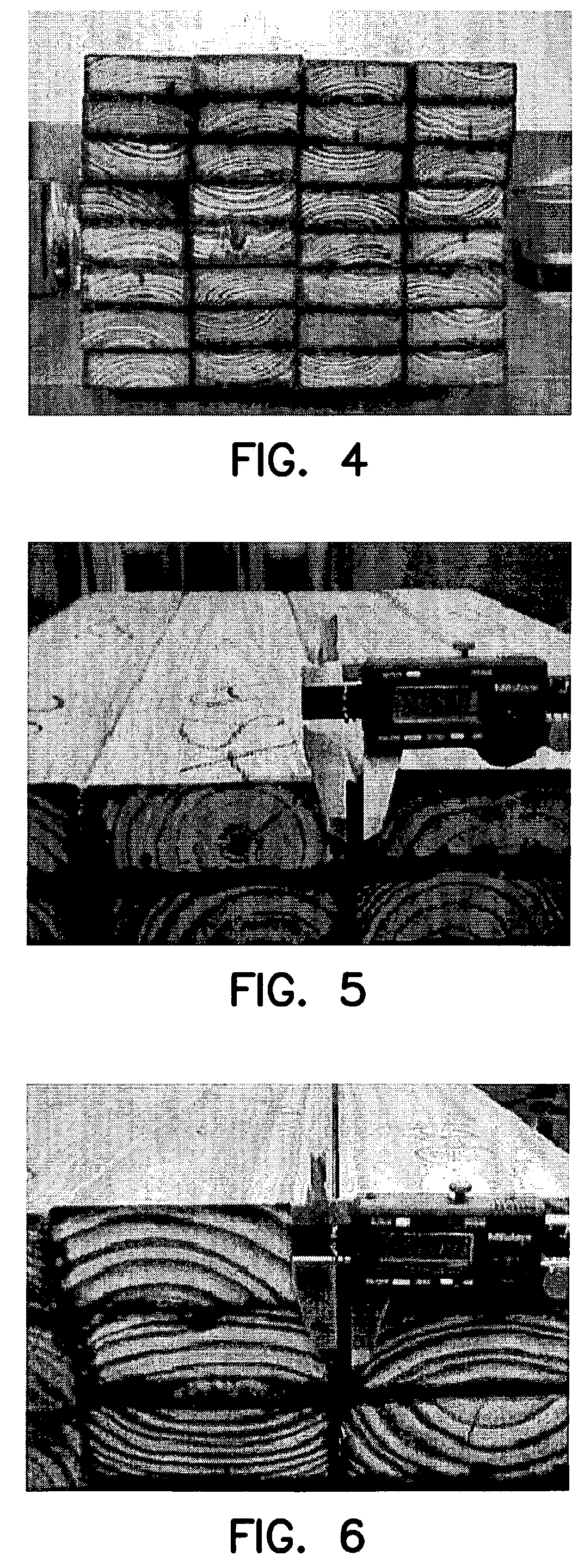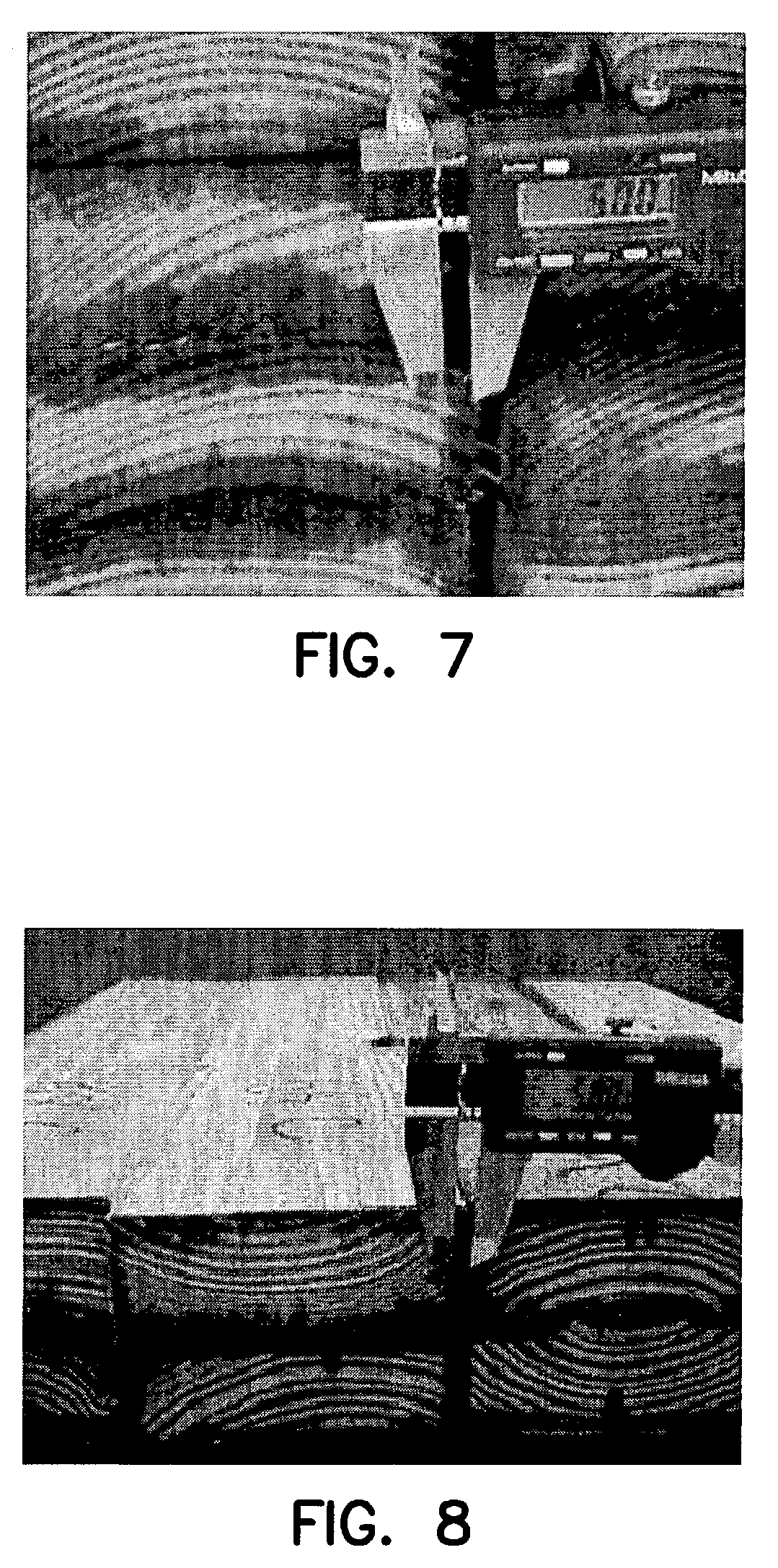Material and method for treatment of timber
a technology for timber and materials, applied in the field of preservatives, can solve the problems of high softwood timbers, pinus radiata, pinus elliotti, etc., and achieve the effect of reducing the incidence of termite attack on timber framed houses
- Summary
- Abstract
- Description
- Claims
- Application Information
AI Technical Summary
Benefits of technology
Problems solved by technology
Method used
Image
Examples
example 1
[0056]Radiata heartwood, radiata sapwood, slash heartwood and slash sapwood was sourced from various suppliers. Boards measuring 35 mm×90 mm×4.8 metres were cut into four separate 1 metre lengths. Boards measuring 35 mm×90 mm×2.4 metres were cut into two separate 1 metre lengths. A drying oil (linseed oil) used in combination with an extender (heating oil) was used (ratio of linseed oil to extender 50:50). The preservative formulation also had an addition of 0.01% (m / m) copper (present as copper naphthenate) as an indicator of the penetration. The test was conducted by firstly weighing the boards, and then dipping the board, in a mixture of the preservative formulation with 0.01% (m / m) copper (present as copper naphthenate) for 1 minute. They were allowed to drip until dry to the touch. Boards were then weighed again and stacked for 24 hours before being cut in half. The exposed surface on one half of the board was sprayed with indicator solution and photographed.
[0057]As shown in T...
example 2
[0065]In Example 1, the treatment process involved a 60 second dip. Trials with pinus elliotti (slash pine) have shown that treatment times can be reduced to as low as five seconds without effecting penetration or retention. Treatment uptake depends on the profile used with rougher headed material giving uptakes 10 to 15% higher than smooth dress material.
[0066]In addition, these trials have shown that packs can be treated in their final shape and form, ie tightly block strapped, without effecting uptake and penetration.
[0067]The table below shows the correlation between dipping time and average uptake. As is clear from this example, dip times as low as five seconds can provide sufficient uptake of carrier / preservative mixture for efficient generation of the protective envelope. This is even true, as mentioned above, with packs of tightly strapped material. In this case packs of 95×45 mm timber were used stacked six high and five wide.
[0068]
TABLE 3Example 2: Uptake Results (Dip time...
example 3
[0069]This example related to the treatment of Douglas fir. Douglas fir (psuedotsuga menziesii) is an inherently difficult species to treat. Trials with this species using the above mentioned formulation have shown penetration in both the hardwood and sapwood similar to pine species. The treatment process involved a 60 second immersion in a preservative carrier mix, where the carrier was at 50:50 mix of linseed oil and heating oil.
[0070]Average uptakes for 100×50 and 150×50 were around 20 L / m3. A well defined envelope was formed in both the heartwood and sapwood.
[0071]Accordingly, it can be seen from this example that the inventive treatment may be applied to a wide variety of timber products.
PUM
| Property | Measurement | Unit |
|---|---|---|
| depth | aaaaa | aaaaa |
| boiling points | aaaaa | aaaaa |
| boiling points | aaaaa | aaaaa |
Abstract
Description
Claims
Application Information
 Login to View More
Login to View More - R&D
- Intellectual Property
- Life Sciences
- Materials
- Tech Scout
- Unparalleled Data Quality
- Higher Quality Content
- 60% Fewer Hallucinations
Browse by: Latest US Patents, China's latest patents, Technical Efficacy Thesaurus, Application Domain, Technology Topic, Popular Technical Reports.
© 2025 PatSnap. All rights reserved.Legal|Privacy policy|Modern Slavery Act Transparency Statement|Sitemap|About US| Contact US: help@patsnap.com



